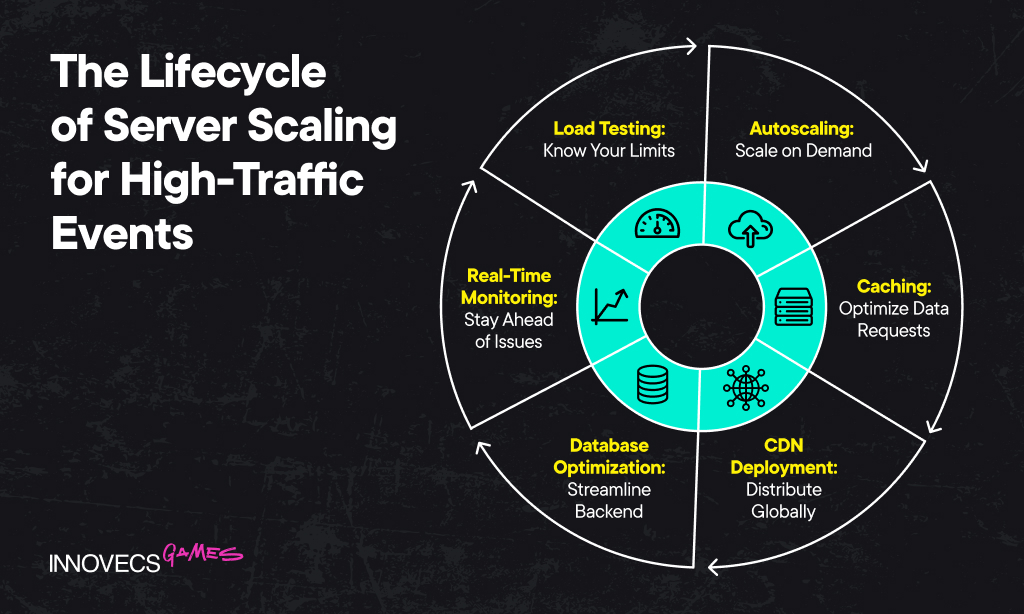Bedding Insights
Exploring the latest trends and tips in bedding and sleep comfort.
Boss Battles in Scalability: How to Conquer Your Gaming Platform's Limits
Unlock the secrets to defeating scalability challenges in gaming! Discover expert tips to supercharge your platform's performance today!
Scaling Up: Strategies to Overcome Your Gaming Platform's Limitations
Scaling up your gaming platform requires a strategic approach to effectively overcome its inherent limitations. One effective strategy is to invest in cloud solutions. Cloud gaming not only enhances scalability but also allows for flexible resource allocation to handle varying player demands. By utilizing cloud-based servers, developers can increase storage and processing capabilities without the need for significant upfront hardware costs. Furthermore, employing a content delivery network (CDN) can minimize latency, ensuring a smoother gaming experience for users across different geographical locations.
Another essential strategy involves optimizing your game architecture. Adopting a microservices architecture allows for continuous deployment and scaling of individual components as needed. This dynamic approach enables teams to isolate and address specific limitations without overhauling the entire system. Additionally, consider implementing load balancing solutions to distribute traffic evenly across servers. This ensures no single server is overwhelmed, providing a solid foundation for a growing gaming community and allowing for seamless integration of new features and enhancements.

Counter-Strike is a popular first-person shooter game that pits teams of terrorists against counter-terrorists in various objective-based missions. Players can utilize a variety of weapons and tactics to outsmart their opponents, making strategy and teamwork essential. For those interested in enhancing their gaming experience, using a rollbit promo code can provide access to exclusive features and rewards.
Understanding the Technical Challenges of Game Scalability
Understanding the technical challenges of game scalability is crucial for developers aiming to create immersive and expansive gaming experiences. As games evolve and attract larger audiences, the infrastructure must accommodate increasing player numbers without compromising performance. Issues like latency, server load balancing, and data synchronization become paramount. For instance, when numerous players interact in a shared environment, maintaining a smooth experience necessitates advanced algorithms and robust server architecture. Without addressing these challenges, developers risk frustrating their users, leading to potential declines in player retention.
Moreover, scalability encompasses both vertical and horizontal challenges across various platforms. Vertical scalability refers to enhancing the capacity of existing servers by upgrading their hardware, while horizontal scalability involves distributing the workload across multiple machines. The choice between these approaches can significantly impact not only performance but also the overall game architecture. Game developers must carefully evaluate their options, ensuring that their design choices can effectively support future growth, adapt to fluctuating player demands, and remain efficient under stress. Addressing these technical hurdles requires a comprehensive understanding of both software and hardware capabilities.
What Are the Key Metrics for Measuring Game Performance and Scalability?
When evaluating game performance and scalability, key metrics play a crucial role in determining how well a game can handle increased loads and maintain optimal user experience. Some of the most important metrics include:
- Frame Rate: This measures how many frames per second (FPS) a game can render. Higher frame rates typically indicate smoother gameplay.
- Latency: This refers to the delay between a player's action and the game's response, which can significantly affect gameplay experience.
- Concurrent Users: Understanding the maximum number of players that can be supported simultaneously helps gauge the scalability of a game's architecture.
In addition to these technical metrics, it's important to monitor user engagement factors such as:
- Session Length: The average time players spend in a game session, which offers insight into its overall entertainment value.
- Retention Rate: This metric shows how many players return to the game after their first play, highlighting its long-term appeal.
- Server Response Time: A quick server response is essential for a seamless gaming experience, especially in online multiplayer settings.